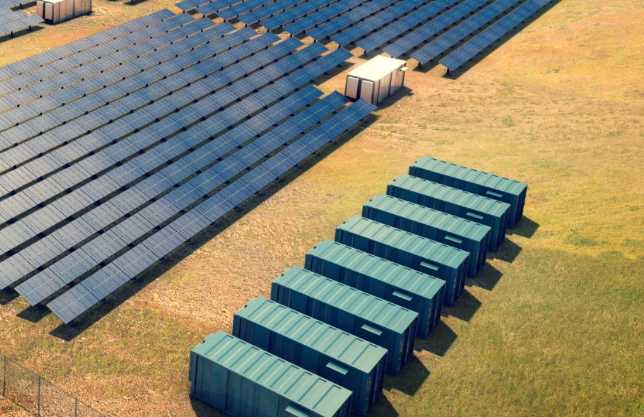An Australian company’s plans to build a “minimum” 100MW of solar PV paired with 100MWh of battery storage in South Australia are firming up, after securing finance from US investment group Magnetar Capital.
Lyon Solar said on Monday that the Illinois-based Magnetar had made an investment in the company to support its development of large-scale solar PV projects in Australia, a development pipeline that includes plans for more than 1GW of grid-connected PV and 500MWh of battery storage by 2020.
A particular recent focus of Lyon Solar, however, has been its planned 2017 development of a PV and battery storage facility near Roxby Downs, a project the company said on the weekend could meet the sort of grid supply shortfall that led to blackouts in the state earlier this month.

The company’s ambitious battery storage plans were firmed up in September of 2016, with the announcement of a partnership with Mitsubishi Corporation.
Under the partnership, Lyon and Mitsubishi will deploy AES Energy Storage’s Advancion battery arrays, although there is little further detail on how exactly this will be done.
In a statement at the time of the Mitsubishi deal, Lyon Group partner David Green said the company would “add enough clean and reliable generation capacity to the energy market to safely allow for the decommissioning of some of Australia’s oldest, most polluting coal-fired power stations.”
In comments to The Australian Financial Review on Sunday, Green said the new equity deal with Magnetar made him ”very confident” the installation of two 50MWh battery storage facilities in SA would go ahead this year.
According to the AFR, Green said adding storage to the large-scale solar plants Lyon Group had planned for South Australia would have “easily been enough” to avert the February 8 load-shedding that cut power to 90,000 homes in in the state.
And the company says that Magnetar – which specialises in investment in energy infrastructure – has further plans to invest Lyon Solar’s development pipeline, which includes the 144MW Kingfisher project (SA) and the 96MW Lakeland project in far north Queensland.
“Magnetar’s investment helps to position Lyon Solar to seize the opportunity presented by federal commitments to decarbonise Australia’s energy sector and the continued decline of solar PV costs. We are very excited by what the future holds,” Green said in a statement on Monday.
So far, the Lyon team has developed over 350MW of renewable energy projects in Australia, Japan and South East Asia.
For Magnetar Capital, the deal marks its first foray into the Australian market, adding to its previous investments in 32 solar projects in the UK, representing 344MW.










